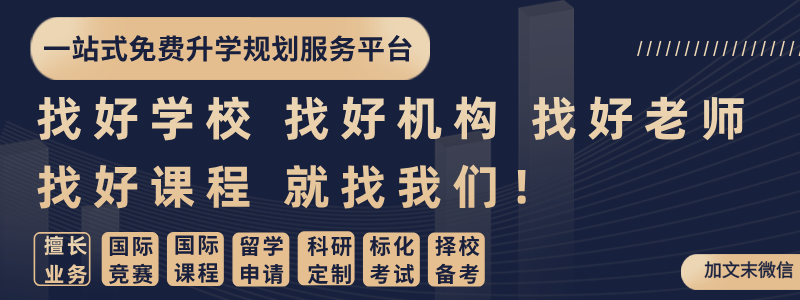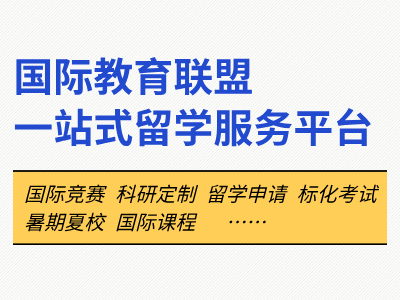文章目录[隐藏]
中文赛题: 应对干旱
背景:位于内华达州和亚利桑那州边界的科罗拉多河水库米德湖是美国最大的水库(图 1)。2021 年夏天,米德湖降至了自 1930 年代首次填满以来的最低水位。 由气候变化导致的干旱和米德湖服务的 2500 万人对水不断增加的需求,使该水库的容量缩小到其全部容量的 36% 左右。2021年8月16日,垦务局宣布了科罗拉多河有史以来的第一个缺水声明[1]。最初,这个一级缺水声明导致亚利桑那州、内华达州和新墨西哥州的供水减少,其中农业社区是第一个感受到削减的。
 图 1: 米德湖概览(国家公园管理局[2] )
图 1: 米德湖概览(国家公园管理局[2] )
随着世界各地干旱的加剧,研究人员继续开发更有效地循环水的方法。 一种方法是回收从水槽、厕所和淋浴间流出的废水。你可能认为这是不可能的(甚至可能这很恶心),但这项技术已经存在并且正在改进。 在目前的大多数情况下,这些废水在排放到当地水道之前要经过几个处理过程。 图 2 显示了水源和使用应用的示例。 处理设施使用各种技术来满足适合用途的规格。 这些规范是将水从特定来源引入、处理以使其达到特定目的所需的质量水平,然后使其可用于该目的所必需的要求。 用途包括农业灌溉、生活用水供应(包括饮用水)、工业和商业用途以及地下水补给。
 图 2: 循环水的水源和用途示例(环保局)[3]
图 2: 循环水的水源和用途示例(环保局)[3]
要求:你的团队需要使用米德湖来调查和了解更多关于干旱对水库的影响,并考虑将废水回收作为解决水资源短缺的方法。 在你开始调查之前,我们提供以下信息:
- 米德湖的水位是通过以高于平均海平面的英尺为单位的高程来测量的。
- 米德湖的面积以英亩为单位。
- 米德湖中的水量以英亩英尺为单位。
表1给出了垦务局2010年测算的米德湖高程、面积、容积关系[4]。
表 1: 米德湖不同海拔的面积和体积
| 海拔(英尺) | 湖泊面积(英亩) | 湖的体积(英亩-英尺) |
|---|---|---|
| 1229.0 | 159,866 | 29,686,054 |
| 1219.6 | 152,828 | 28,229,730 |
| 1050.0 | 73,615 | 10,217,399 |
| 895.0 | 30,084 | 2,576,395 |
-
米德湖体积。 米德湖中的水量是流入、流出和损失的函数。 科罗拉多河提供了超过 96% 的流入量、来自其他三个支流的额外水量和湖面的直接降水。 流出是通过释放水(例如通过大坝)和直接从湖中消耗而发生的。 损失通过蒸发发生。
- 辨认和描述影响米德湖流入、流出和损失的因素。讨论这些因素之间的关系及其对米德湖水量和水位的相对影响。
- 米德湖的形状非常不规则,深度各不相同。考虑如何验证表 1 中所示的高度、面积和体积关系。列出你需要哪些信息和数据,并讨论如何使用数学来计算这些度量。请注意:不需要获取这些数据或计算度量。
-
米德湖水位。这两个问题数据文件提供了有关米德湖水位的信息,以高于平均海平面的英尺为单位。
- 模型 1:仅考虑最近干旱期的数据,并假设最近干旱期的模式仍在继续。
- 模型 2:使用 2005 年至 2020 年的水位数据,并假设这一时期的模式继续下去。
- 考虑提供的数据。简要讨论米德湖水位历史数据的总体模式。定义干旱期的标准并确定干旱期的开始和结束。请评论最近的干旱期与以前的干旱期相比有什么差异。
- 以年为单位,建立米德湖水位的模型。使用每个模型预测 2025、2030 和 2050 年米德湖的水位。比较和评估你的两个模型及其预测结果。
-
根据你在第 2 部分中的模型和水位预测,讨论水位变化对未来用水需求的影响,并考虑废水的回收利用是否可以弥补所有或部分未来的短缺。
- 确定并描述你将包含在废水回收计划中的因素。考虑当地领导人需要做出的决定以及他们可能设定的会影响您的计划的优先事项。
- 描述你的计划以及你将如何衡量实施计划的影响。
-
写一篇一页的非技术新闻文章,报告您调查的关键要点和建议。
你们的(PDF格式)论文总页数不能超过 25 页并且应该包括:
- 一页摘要。
- 目录。
- 你们完整的解决方案。
- 一页备忘录。
- 参考文献。
注意:HiMCM 竞赛现在有 25 页的限制。 你提交的论文所有部分(摘要表、目录、参考文献和任何附录)的总页数必须控制在25 页以内。
附件:
- 附件 A:2021 HiMCM LakeMead MonthlyElevationData.xlsx 从 1935 年到 2021 年,每年每个月末米德湖的水位高程(以英尺为单位)。垦务局数据见 https://www.usbr.gov/lc/riverops.html。
- 附件 B:2021 HiMCM LakeMead_LowHighElevationData.xlsx 每年米德湖的最高和最低水位(以英尺为单位)。 垦务局数据见 https://www.usbr.gov/lc/riverops.html。
词汇表:
-
垦务局:管理、开发和保护美国西部 17 个州的水资源和相关资源的政府机构。
-
高程:以高于平均海平面的英尺数表示的高度量度。
-
适合用途规范:建筑设计说明,表明设施(在这种情况下为特定类型的水处理设施)满足其特定预期用途的要求。
-
流入:进入水体的水。 平均海平面:海平面的平均水平,用作测量地球高度或深度的参考或基准水平。
-
流出:离开水体的水。
-
废水:来自家庭、企业、工业过程或雨水径流的受污染形式的水。 废水包括家庭用水,如淋浴、洗碗、洗衣,还有冲马桶。
英文赛题:Tackling the Drought
Background:Lake Mead, a Colorado River reservoir on the Nevada-Arizona border, is the largest water reservoir in the United States (Figure 1). In the summer of 2021, Lake Mead registered its lowest level on record since its initial filling in the 1930s. Drought, fueled by climate change, along with increasing demand for water by the 25 million people Lake Mead serves, has shrunk this reservoir to approximately 36 percent of its full capacity. On August 16, 2021, the Bureau of Reclamation announced the first-ever water shortage declaration on the Colorado River[1], Initially, this Tier 1 water shortage declaration results in reduced water deliveries to the states of Arizona, Nevada, and New Mexico with agricultural communities being the first to feel the cuts.
 figure 1: Lake Mead Overview (National Park Service[2])
figure 1: Lake Mead Overview (National Park Service[2])
As droughts around the world have been increasing, researchers continue to develop means to recycle water more efficiently and effectively. One method is to recycle wastewater that flows out of our sinks, toilets, and showers. You may think this is impossible (and perhaps disgusting), but this technology already exists and is improving. Under most current circumstances, this wastewater goes through several treatment processes prior to being released into local waterways. Figure 2 shows examples of water sources and use applications. A treatment facility uses various techniques to meet fit-for-purpose specifications. These specifications are the requirements necessary to bring water in from a particular source, treat itto get it to the quality level needed for a particular purpose, and then make it available for that purpose. Some purposes include agricultural irrigation, domestic water supply (to include drinking water), industrial and commercial use, and recharging groundwater.
 Figure 2. Examples of water sources and use application for recycled water (Environmental Protection Agency[3]
Figure 2. Examples of water sources and use application for recycled water (Environmental Protection Agency[3]
Requirements:Your team decides to use Lake Mead to investigate and learn more about drought impact on water reservoirs, and to consider the recycling of wastewater as a solution to water shortages. As you begin your investigation, we provide the following information: The level of Lake Mead is measured by elevation of the water surface in feet abovemean sea level. The area of Lake Mead is measured in acres. The volume of water in Lake Mead is measured in acre-feet.
Table 1 shows the relationship of elevation, area, and volume of Lake Mead as calculated by the Bureau of Reclamation in 2010[4]
Table 1. Area and Volume of Lake Mead by Elevation Level
-
Lake Mead Volume. The amount of water in Lake Mead is a function of inflow, outflow, and loss. The Colorado River provides over 96% of the inflow with additional water coming from three other tributaries, as well as direct precipitation on the lake surface. Outflow occurs through releasing water (for example, through a dam) and consumption directly from the lake. Loss occurs through evaporation.
- Identify and describe factors that impact inflow, outflow, and loss in Lake Mead. Discuss the relationship of these factors and their relative influences on the volume and water level of Lake Mead.
- Lake Mead has a very irregular shape and varying depths throughout. Consider how you would verify the elevation, area, and volume relationships shown in Table 1. Describe what information and data you would need and discuss how you would use mathematics to calculate these measures. Note: You are NOT required to obtain these data or calculate the measures.
-
Lake Mead Water Level. The two problem data files provide information about Lake Mead water levels given by elevation in feet above mean sea level.
- Model 1: Consider data from only the most recent drought period and assume the most recent drought period's pattern continues.
- Model 2: Use water level data from 2005 - 2020 and assume this period's pattern continues.
- Consider the data provided. Briefly discuss overall patterns in the historical data for Lake Mead water levels. Define your criteria for drought periods and identify the beginnings and ends of periods of drought. Comment on how the most recent drought period compares to earlier ones.
- Develop two models for the water level in Lake Mead as a function of the year. Use each model to predict the water level in Lake Mead in the years 2025, 2030, and 2050. Compare and evaluate your two models and their predictions.
-
Based on your models and water level predictions in Part 2, address the impact on future water usage demands and consider if the recycling of wastewater could make up all or a part of any future shortfalls.
- Identify and describe the factors you would include in a plan to recycle wastewater. Consider the decisions local leaders would need to make and the priorities they might set that would impact your plan.
- Describe your plan and how you would measure the impact of implementing your plan.
-
Write a one-page non-technical news article reporting the key takeaways and recommendations from your investigation.
Your PDF solution of no more than 25 total pages should include:
- One-page Summary Sheet.
- Table of Contents.
- Your complete solution.
- One-page Article.
- References list.
Note: The HiMCM Contest now has a 25-page limit. All aspects of your submission count toward the 25-page limit (Summary Sheet, Table of Contents, Reference List, and any Appendices).
Attachments:
- Attachment A: 2021 HiMCM LakeMead MonthlyElevationData.xlsx Elevation of water at Lake Mead (in feet above sea level) at the end of each month by year from 1935 to 2021. Bureau of Reclamation data found at https://www.usbr.gov/lc/riverops.html.
- Attachment B: 2021 HiMCM LakeMead_LowHighElevationData.xlsx The highest and lowest water elevation at Lake Mead (in feet above sea level) by year. Bureau of Reclamation data found at https://www.usbr.gov/lc/riverops.html.
Glossary:
-
Bureau of Reclamation: a government agency that manages, develops, and protects waterand related resources in the seventeen western states of the Unites States.
-
Elevation: a measure of height indicated by the number of feet above mean sea level.
-
Fit For Purpose Specifications: a description of construction design that indicates the facility (in this case a particular type of water treatment facility) meets the requirements for its specific intended use.
-
Inflow: the water entering a body of water. Mean Sea Level: an average level of the surface of the sea used as a reference or base level to measure height or depth on Earth.
-
Outflow: the water leaving a body of water.
-
Wastewater: the polluted form of water that comes from homes, businesses, industrial processes, or rainwater runoff. Wastewater includes water from household uses such as showering, dishwashing, laundry and, of course, flushing the toilet.
参考资料
[1]Bureau of Reclamation. Reclamation Announces 2022 Operating Conditions for Lake Powell and Lake Mead, 2021: https://www.usbr.gov/newsroom/#/news-release/3950
[2]National Park Service. Overview of Lake Mead, 2020: https://www.nps.gov/lake/learn/nature/overview-of-lake-mead.htm
[3]United States Environmental Protection Agency. 《Basic Information about Water Reuse, 2021: https://www.epa.gov/waterreuse/basic-information-about-water-reuse
[4]National Park Service. Storage Capacity of Lake Mead., 2019: https://www.nps.gov/lake/learn/nature/storage-capacity-of-lake-mead.htm














